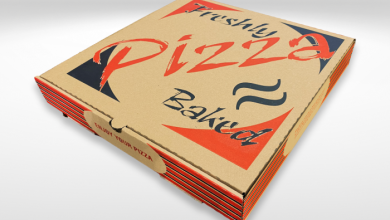Internet of Things: The Key to Digital Transformation

The Internet of Things (IoT) has already begun to play a role as a game changer in today’s businesses. To reap the benefits of the Internet of Things (IoT), more and more entrepreneurs jump on the bandwagon yearly.
According to a Statista report, there will be 75.44 billion connected devices globally by 2025. In such a scenario, it is interesting to see how IoT plays a role in accelerating enterprise digital transformation.
Everything you use daily is connected to the internet via IoT, defined as “a system of interconnected computing devices, mechanical and digital equipment supplied with unique identifications and the ability to transfer data over a network without requiring user interaction” (https://en.wikipedia.org/wiki/Internet of things).
Role of IoT in Digital Transformation
It is essential for digital transformation that IoT Application Development Services is used. On the other hand, other factors enhance the Internet of Things’ use and accelerate its expansion. Artificial intelligence (AI) has enabled companies to realize the enormous value of data by turning it into useful information.
AI-enhanced digital IoT applications make predictive, perspective, and appropriate analytics possible.
In addition, cloud computing has cleared the path for and accelerated the emergence of the Internet of Things (IoT). By bringing cloud computing capabilities closer to linked devices, the Internet of Things has accelerated the expansion of cloud computing.
Because of the advancements in digital transformation technologies, cloud computing is now more easily accessible to end devices and the data centers that house it.
It’s all about data these days, according to Wharton Magazine, which means that firms may use customer data directly to drive their operations. Companies may use digital transformation to understand their customers better. This hole is filled by the Internet of Things (IoT).
New data is made available, allowing teams to do much more with it, such as improving their capacity to predict the future and extending the useful life of products. Digital transformation occurs as a result of IoT implementation.
With the Internet of Things, we have the opportunity to enhance current practices while simultaneously enabling the creation of new, higher-quality services and products.
Using IoT as part of their digital transformation initiatives is the primary motivator for companies to acquire new or more data across all operations thanks to this technology. The following are some additional advantages:
Improved use of resources
Internet of Things (IoT) identifies bottlenecks in critical processes.
Reductions in Expenses
You can pinpoint where time and resources are wasted using the Internet of Things.
More Satisfied Clients
Because of the Internet of Things, companies can better predict their consumers’ needs and provide products that solve their problems.
Future-Proof Operations
Because of the world’s increasing interconnectedness and its users, you are adapting your company model to accommodate this trend.
Twins in the Digital Age
With a digital twin, you can make the most of all the data produced by your IoT devices. ‘ (I’ll explain why in a second.)
Keeping Your Competitive Edge
According to a recent report, the most influential people in most industries have already adopted IoT and are reaping its benefits. We know this because we gathered our data from several different places.
- The Internet of Things (IoT) was used by 86% of healthcare organizations in 2019.
- Manufacturing firms consider IoT to be a strategic requirement for their digital transformation, according to 58% of manufacturers.
- By 2018, 57% of businesses were using Internet of Things (IoT) technologies.
Things Internet and Digital Transformation: How to Get Started
The Internet of Things is important to the future of many industries. To make an informed decision on how your team should use IoT for digital transformation, keep the following things in mind:
- In what ways do we hope that the Internet of Things will assist us in achieving the goals and solving the difficulties of our business?
- What kinds of data would it be beneficial to collect regularly?
- In the end, what do we aim to gain from this research?
- What other departments could benefit from this information?
- What long-term goals or demands do we envision placing on our shoulders? In what ways may we make use of different kinds of data?
The Internet of Things Digital Transformation Has Its Challenges
What’s stopping your team from embracing digital transformation through the Internet of Things (IoT)? It’s possible that one of the following significant elements is to blame:
Investment
The cost of implementing the Internet of Things (IoT) is high. The cost of purchasing and installing Internet of Things (IoT) devices and systems can be high.
When learning how the internet of things works, planning your first internet of things project, integrating new tools and techniques, and updating your old procedures are just some of the considerations. Getting started with IoT may look to be a daunting task, and is it even worth it?
The answer to this question is most likely yes. However, it will depend on your team’s needs and goals. Yes, it’s definitely worth the effort. Start with a solid foundation of tools. Take baby steps. Accept the fact that you may not be able to achieve your goals. After collecting data and reflecting on what you’ve learned, try it again.
Security
Due to safety concerns, many organizations are reluctant to invest more money in the Internet of Things (IoT) initiatives. Their data and that of their customers are at risk because of this.
IoT security is the most crucial worry for businesses when using the technology, according to a report by Venturebeat that relied on research from Omdia (cited by 53 percent of respondents).
Businesses must be aware of the safeguards when protecting their data and computer systems. Your Internet of Things solutions (ranging from sensors to smart devices, cloud servers, and IoT platforms) may take some time to select suppliers.
Compliance
Another primary concern for businesses is ensuring they comply with data protection laws. A company’s yearly sales can be fined up to 4% of its revenue if it violates the General Data Protection Regulation (GDPR).
Regulations governing data gathering from EU citizens also apply to companies that collect data from EU citizens. Organizations are at risk when losing a lot of money because of a lack of trust from their customers. Security and auditing histories should be made public by the vendor.
Smart Things + Digital Twins = IoT
Your team will learn much even if they only accomplish one Internet of Things project. However, you should consider digital twins to get the most out of your investment in this technology.
Each piece of new and continuous data is valuable on its own, but what if you were able to accomplish even more with it?? With all this information in a digital twin of a product or system, you can better comprehend how all the pieces fit together. The digital twin can be used in a range of industries to:
- Many prototypes should be built and evaluated.
- Create new production scenarios to test out new ideas.
- Pay attention to the supplier chains.
- Become more familiar with the product’s life cycle.
- Ensure that all of the teams are communicating with each other.
- Real-time visualizations of complex systems (with the help of game engines).
And that’s only the beginning. Future technologies such as digital twins and the Internet of Things (IoT) are beginning to take shape. Shortly, this technology will continue to merge with other technologies, such as virtual and mixed reality. All those who can start investing in new technological products and services should do so.
Conclusion
Although connecting devices is not a new concept and the Internet of Things has opened up new possibilities, we are only at the beginning of an era in which the number of people who use the Internet of Things will increase. As a result, it will play a critical role in the digital transformation of the economy.
IoT devices can provide business value while multiplying the item’s worth by a large number when combined and organized with data from the environment, society, and enterprises.
As a result, IoT-based solutions are a critical part of every company’s operational model and, as such, should be included in any strategy for digital transformation.



